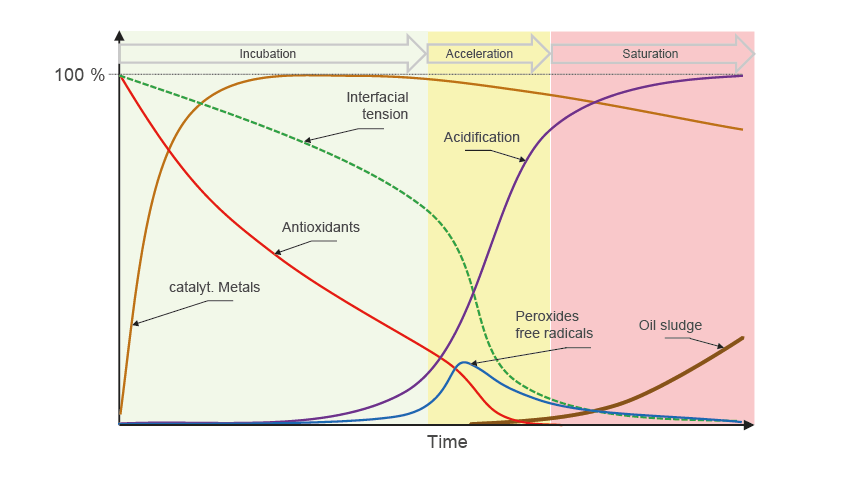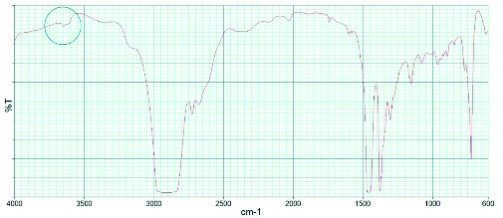Oxidationsinhibitoren (Antioxidants) – Elixirs of life for modern lubricants
OELCHECK checks oxidation with the RULER test and IR spectroscopy
The ageing process to which all lubricants are subjected during their use is essentially dominated by the oxidation of the base oil. The speed of this oxidation process is mainly influenced by temperature. For mineral oils without additives, the rule of thumb (Arrhenius rule) applies that oxidation doubles from an operating temperature of approx. 60 °C when the temperature increases by 10 °C in each case. In modern lubricants, “antioxidants” delay this acceleration process. However, the more these active ingredients are consumed, the less the oil is able to effectively brake the oxidation process.
The greater the extent to which the antioxidants have degraded, the higher the likelihood that sticky oxidation products, often referred to as varnish, will develop. The change in antioxidants is used as an early warning system for a risk due to formation of deposits. OELCHECK has been using the RULER test, combined with infrared
spectroscopy, for over 20 years.
More efficient machines, better lubricants
Increasingly faster and more heavily loaded machines as well as longer oil life often lead to a higher temperature load on the lubricants. This in turn accelerates oil oxidation. The minimum requirements for many industrial lubricants are defined in DIN or ISO standards, which are regularly adapted. Lubricant manufacturers meet the increasing requirements by using saturated base oils (Group II or III), which are additionally improved with a higher proportion of newly formulated antioxidants.
This is particularly evident for circulating oils used for turbine lubrication. Until a few years ago, conventional turbine oils were based on API Group I base oils. They were predominantly mixed with phenolic antioxidants, combined with some amines, sulphides or phosphates. Modern turbine oils are manufactured from mineral API Group II (hydrotreated) or Group III (hydrocracked) base oils or even synthetic PAO oils (Group IV). Aminic antioxidants are mainly used as additives for these oils. Phenolic active ingredients are now only contained in low concentrations.
Both turbine oils have two characteristic peaks in the RULER diagram (see figure below). Each represents a type of antioxidant. In the left diagram, a relatively high content of phenolic antioxidants is visible with the second peak. The right diagram is typical for a turbine oil with a Group II base oil. While the signal for the phenolic antioxidants is only weak, the signal for the aminic antioxidants dominates. The RULER test provides very reliable statements about the degradation of aminic antioxidants in modern turbine oils. However, statements about the phenolic antioxidants are compromised due to their very low concentration.
Intensive investigations have shown that changes in phenolic antioxidants, especially at low concentrations, can be reliably determined with FT-IR spectroscopy.
Antioxidant testing: New concept
Modern lubricants are usually produced on the basis of saturated base oils. For these oils developed for long-term use, it is very important to know the content of residual effective antioxidants.
OELCHECK tribologists have therefore decided to adapt the concept of the parameters that are important for diagnosis. In future, the phenolic antioxidants will be determined in the OELCHECK laboratory using FT-IR, while aminic antioxidants will be determined using the RULER test. As before, both values are reported and assessed in % of residual effective antioxidants compared to fresh oil.
OELCHECKER Winter 2020, page 6






